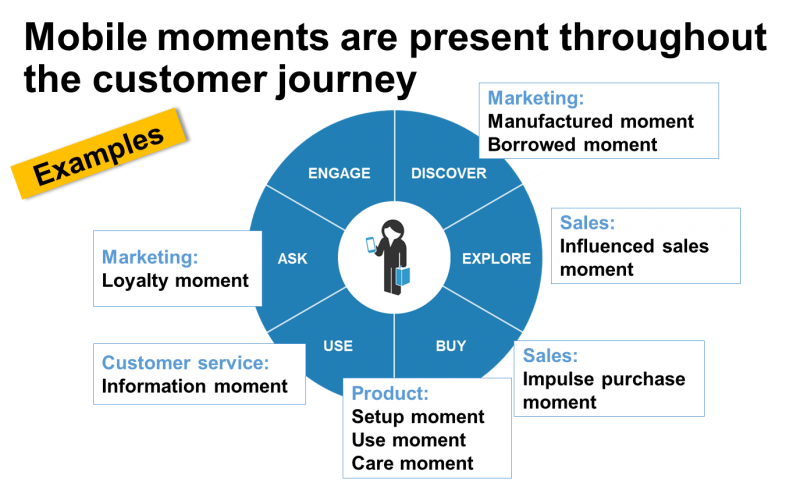Winning In Your Customers’ Mobile Moments
Globally, consumers will own more than six billion mobile phones by the end of 2014, and about two billion of them will be smartphones. With this penetration comes the mobile mind shift – the expectation to be able to access any information or service on the mobile device, in the moment of need.
What’s more, consumers reach for their mobile phones 100 to 200 times a day. In these mobile moments, they expect companies to understand their context and offer relevancy as well as both curated and streamlined experiences on mobile devices. They want to see if their children are home from school, buy coffee, access coupons, check in for a flight, check stock prices, use Skype to call Singapore, and play Candy Crush. Enterprises must learn how to, and then serve, customers in these mobile moments. Otherwise, they will lose – an entrepreneur like Uber’s Travis Kalanick will disrupt their business just like he did with taxis.
Mobile moments extend all of the way through the customer’s journey.

But while mobile has definitively become the most important digital platform for most companies to engage with their customers, too few enterprises have embraced this opportunity. Too many view the mobile phone as simply a smaller screen or another channel.
Only a few businesses, like Starbucks, have been able to curate and own mobile moments with their customers. More than 10 million customers engage with the coffee chain each week through its mobile payment app. Starbucks owns what we call Loyalty Mobile Moments. For them and others like Citibank, USAA, and United Airlines, they must strive to excel in those moments of truth.
Engaging with consumers on mobile devices in the loyalty moment continues to elude most companies, however. Why? Because with a few exceptions, only a fraction of customers download apps from the brands with which they do business. Few reach as many customers as eBay (> 100M downloads) or Groupon (80M downloads). For these companies not interacting with their customers every day, mobile moments must be manufactured or borrowed. Very few brands have big hits with manufacturing mobile moments – or creating new opportunities to engage with consumers frequently on mobile devices. Nike, P&G, and Cisco are a few stand-out examples. Most companies will borrow through subscriptions or paid media on third party sites like Facebook or WeChat that own hundreds of millions of moments each day.
As a company, you must learn to identify your customers’ mobile moments and their associated context, and then design engagement to win in those mobile moments. Most companies will then spend tens if not hundreds of millions re-architecting their backend to transform their business. Finally, analytics will be the key to monitoring performance and optimizing outcomes. By following this process – what we call the IDEA cycle in our new book The Mobile Mind Shift – firms will be best positioned to win, serve, and retain customers through the mobile moment.
